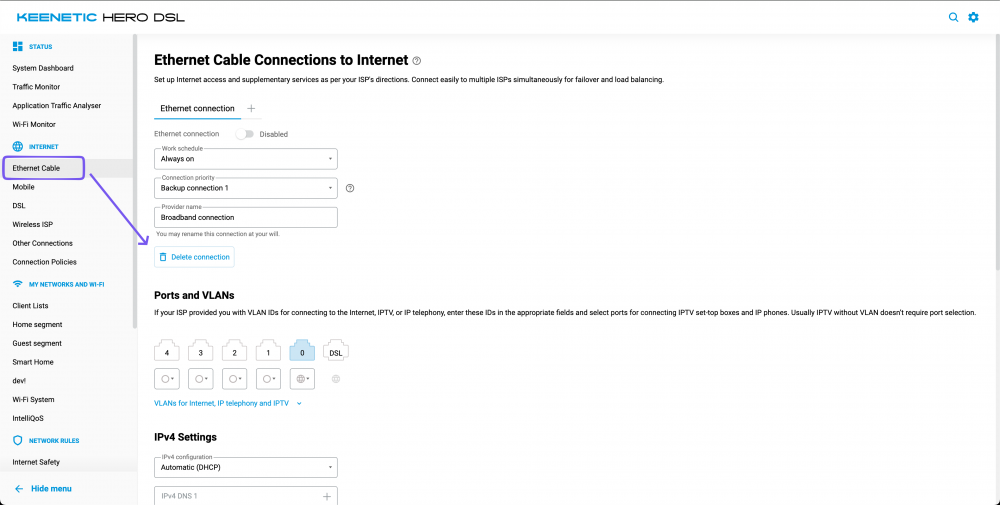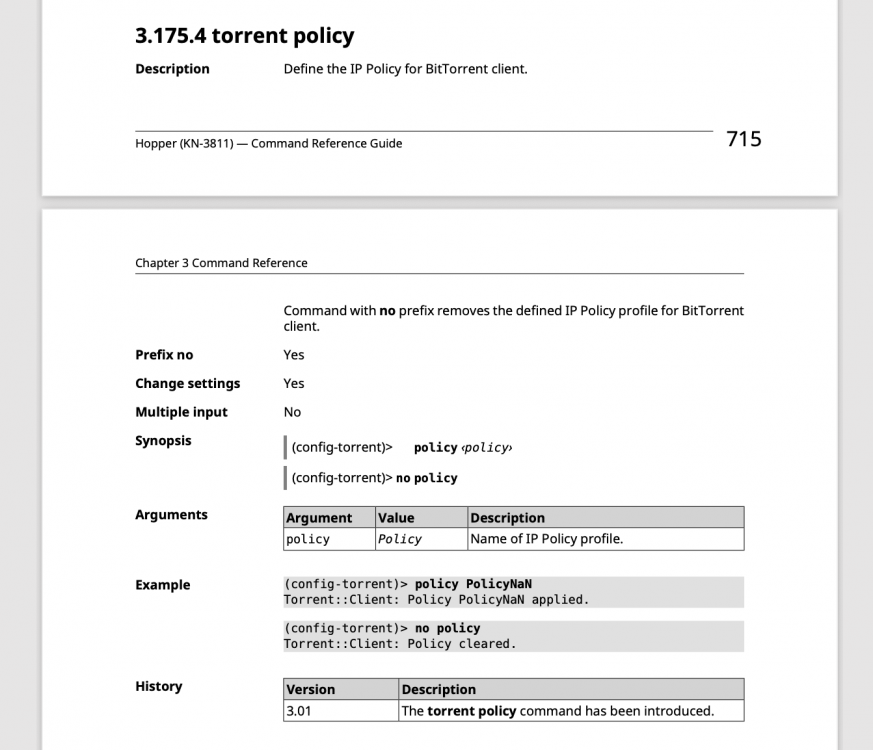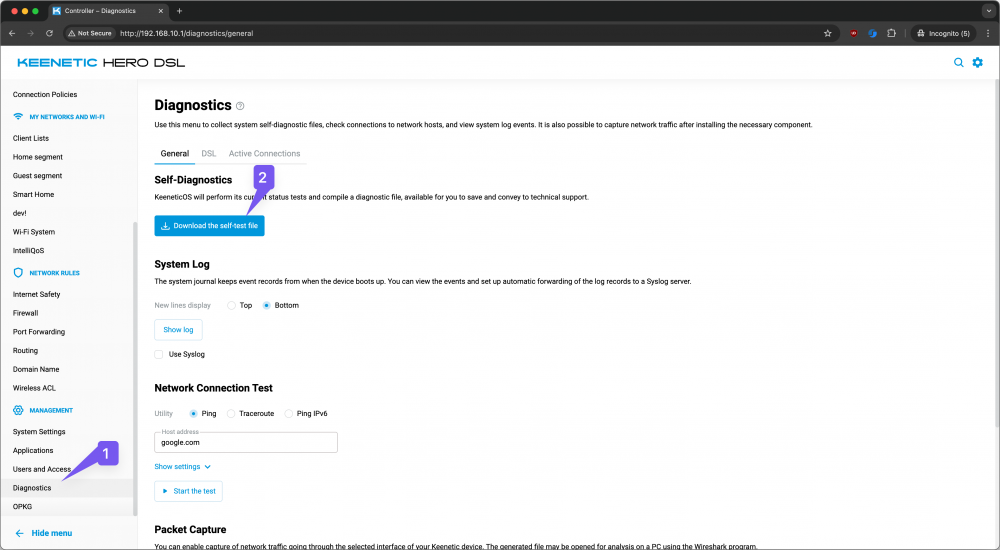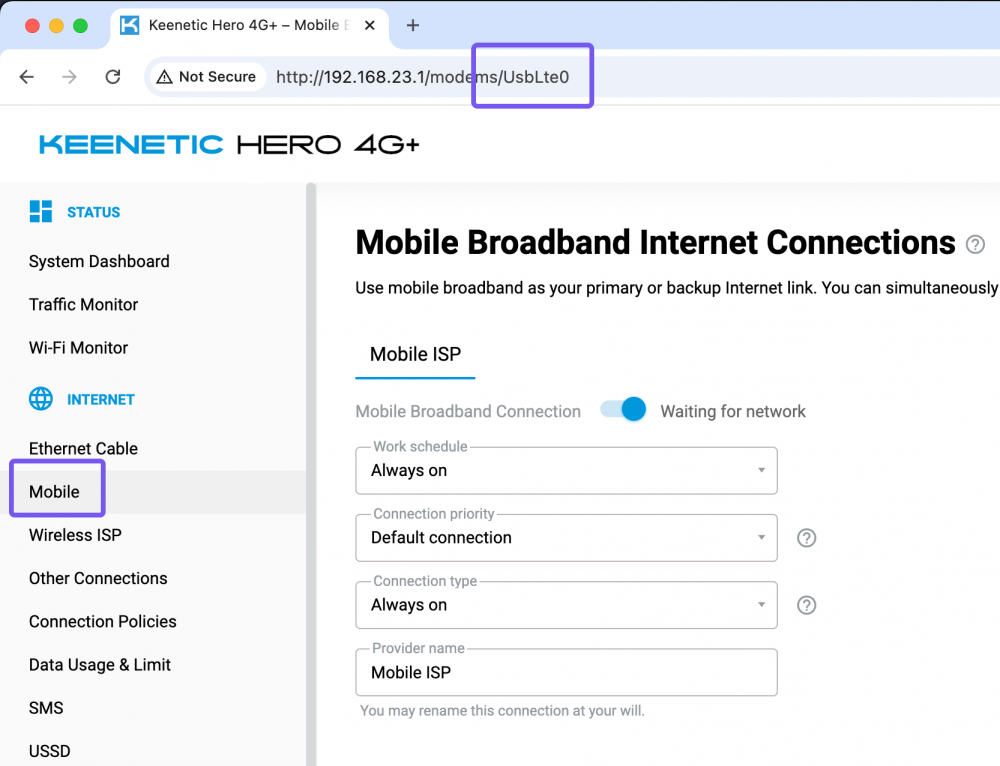-
Posts
1880 -
Joined
-
Last visited
-
Days Won
87
Content Type
Profiles
Forums
Gallery
Downloads
Blogs
Events
Everything posted by eralde
-

Download Station (Transmission) routing over VPN
eralde replied to spetr's question in Feature Requests
If you save the configuration (system configuration save) after assigning the policy that should not happen. If that indeed happens, then please do the following: configure the policy and assign it to the Transmission download a self-test file add or remove a firmware component (and update the firmware) check if the policy assignment for the Transmission is missing (it if is missing) download another self-test file after the device boots again attach both self-test files to this thread in a hidden message Generally speaking, if you configured the policy and saved the configuration, then if you download the startup-config file, there should be a torrent policy ... line in it. -

Download Station (Transmission) routing over VPN
eralde replied to spetr's question in Feature Requests
Hello @spetr You can create a dedicated connection policy where the VPN interface is the primary one and then assign it to the Transmission client using the torrent policy command: Don't forget to save the device configuration (system configuration save) after you configure the Transmission policy. -
Yes, once you reset the Titan to the factory settings, the Initial Setup Wizard should start automatically (once you connect your computer back to the Titan).
- 1 reply
-
- 1
-

-

I tried everything but couldn't get rid of it
eralde replied to TarkanTevetoglu's question in Issues & test reports
@TarkanTevetoglu so far we don't see any obvious issues with your configuration. Could you try the following to see if it resolves the issue: download the startup-config file from your device (to roll back to it if necessary) delete all Firewall/Port forwarding rules that you created check if you can access your router via KeenDNS after you've deleted the rules ? If this does not help, you can upload the startup-config to restore all the rules you have now. -

I tried everything but couldn't get rid of it
eralde replied to TarkanTevetoglu's question in Issues & test reports
I can understand your frustration, but this forum is not technical support. I will forward your self-test data to people who will be able to look into this issue during working hours next week. In the meantime you can contact technical support here: https://support.keenetic.com/eu/?lang=en https://support.keenetic.com/tr/?lang=en -

I cannot SSH to Router after installing Entware Packages
eralde replied to Mahmut Bayülgen's question in Opkg Questions
Please check out this KB article: https://help.keenetic.com/hc/en-us/articles/360021214160-Installing-the-Entware-repository-package-system-on-a-USB-drive You don't need an SSH connection to actually install the Entware. You should be able to connect to the Entware shell via SSH once it is installed on your new drive. -

I tried everything but couldn't get rid of it
eralde replied to TarkanTevetoglu's question in Issues & test reports
@TakaiSaisei please attach the self-test file from your device in a hidden message to this thread. You can check out this KB article to see how to download the self-test file. -
@Andrew Powell if you want the download station to use a specific WAN connection, you can create a connection policy and then assign it to the download station by executing the torrent policy {policy} command.
-
The clients with random MAC addresses should not be registered automatically even if that setting is turned on. If that is not so in your case, please attach a self-test file in a hidden message here and mark which clients were automatically registered by mistake.
-

Problem displaying results in the transition log area 🙄
eralde replied to Pars's question in Dev channel issues & test reports
@Pars @PriSonerS61 @ru.celebi @Ahmed Ensar, thank you for your help. The issue is confirmed, it will be fixed in one of the future versions. -

Problem displaying results in the transition log area 🙄
eralde replied to Pars's question in Dev channel issues & test reports
@Pars ok, so far no visible issues from the browser. Could you create a readonly user account and DM me the login/password so I can log in to your device remotely and check the issue myself? -

Problem displaying results in the transition log area 🙄
eralde replied to Pars's question in Dev channel issues & test reports
@Pars, hi! Could you tell us a bit more about the issue: 1. what browser do you use? 2. if you open the developers tools panel in your browser (it is typically opened by pressing F12 on your keyboard) are there any errors on the Console tab there? -

Three segments in one IP zone, two have no internet.
eralde replied to maemelyanov's question in Community Support & Knowledge Exchange
Hello @maemelyanov Could you elaborate on this part: ? Was the segments configuration you described saved successfully (i.e. if you reload the web UI, do you see it configured there)? Also, it would be great if you could attach a self-test file from your device to this thread and hide the post with it (moderators will still be able to see it). -
Hello, @alasedo. The data that our devices collect is listed here: https://keenetic.com/en/legal#dpn. Even if you have disabled the cloud features and service to communicate with the mobile app, there is still data transmission for the Authenticity Status Verification and the Internet Checker feature as outlined in the document. You can disable the Internet Checker, by executing the following commands: no service internet-checker system configuration save However, it is not possible to disable data transmission that is used for the authenticity verification purposes.
- 2 replies
-
- 2
-

-
- keenetic os
- 4.3.0 preview
- (and 4 more)
-

Titan KN-1810 - Openvpn Issue
eralde replied to fritz box's question in Community Support & Knowledge Exchange
@fritz box, thank you for checking out the simplified policy configuration. After reading your last comment, I don't think I understand how your network is configured. Can you draw a schematic of your network: - how devices (Keenetic routers, computes, smartphones, ...) connected to each other (including connection policies on Keenetic routers) - on which devices the OpenVPN is configured ? And what problem are you trying to solve with a “double tunnel” VPN configuration? -

Grid Layout Issue in Edge / 4.3B3
eralde replied to ru.celebi's question in Dev channel issues & test reports
Yes, thank you! This will be fixed in one of the future versions. That is a separate issue (both the KeenDNS name/icon alignment and the spacing in the clients table have the same underlying cause). It also will be fixed -

Grid Layout Issue in Edge / 4.3B3
eralde replied to ru.celebi's question in Dev channel issues & test reports
@ru.celebi thank you for the report! It would be better if you don't hide the posts you publish here. If you don't want to include personal information (e.g. device names / IP addresses / MAC addresses) in your screenshots – blur them out before uploading the images. Firstly, this way you won't post two identical posts, and secondly, if your posts are visible, other users will also be able to check if they have the same problem. Thanks again for reporting the problems -

Titan KN-1810 - Openvpn Issue
eralde replied to fritz box's question in Community Support & Knowledge Exchange
Thank you for the self-test file! The configuration looks correct. Can you try something? Will your devices have Internet access if you: - disable multipath in that policy - remove rate-limiting for the OpenVPN interface ? Should look similar to this: -

Titan KN-1810 - Openvpn Issue
eralde replied to fritz box's question in Community Support & Knowledge Exchange
Hello @fritz box Please attach either a couple of screenshots of your browser with Policy Connections/Policy Bindings or a self-test file (you can download it from the Diagnostics page or the System Settings page. If you decide to attach the self-test file, please toggle the "Hide" toggle when adding a new message to this thread, so only the moderators of the forum will see your message. -

4.3 Beta 3 "General System Settings" possible issue
eralde replied to Serhij's question in Dev channel issues & test reports
This is expected behavior. The fail-safe mode is designed to prevent the device from losing remote access to the device when its settings are changed. Each of these operations can result in loss of remote access to the device.- 1 reply
-
- 1
-

-

KN-1812 and AI IntelliQoS
eralde replied to Michał's question in Community Support & Knowledge Exchange
The IntelliQoS feature in Keenetic devices uses a DPI engine called PACE2. The provider of this DPI engine says that it will use some AI techniques to classify traffic. That's why we also say that we have the AI IntelliQoS in our products. Since every Keenetic model uses the same DPI engine, every model will get the AI version with a firmware update at some point. -

Hero 4G+ (KN-2311). SMS gateway, SMS API and AT commands
eralde replied to Enrico's question in Community Support & Knowledge Exchange
Hello, Enrico! Yes, it is possible to send and list received SMS via the REST API. The easiest way to do it is to see how the web interface interacts with the router. I wrote an extended explanation for USSD requests here: Commands for reading/sending SMS are quite similar (sms {interface} list, sms {interface} send, sms {interface} delete, sms {inteface} read). A simple example: A few extra notes: - you need to be authorized on the Keenetic to send the requests; the auth process is described here (in Russian): https://forum.keenetic.ru/topic/5461-не-работает-digest-авторизация-для-rci/#findComment-62946 preserve session cookies while sending follow-up GET requests - don't forget to set the Content-Type HTTP header for your requests (Content-Type: application/json)- 1 reply
-
- 2
-

-

-

[Issue] Quit Wi-Fi Mesh System Page While Acquiring
eralde replied to KYTECHNGAMING's question in Web interface
Thank you for the report! Looks like the MWS controller send incomplete data to the web UI. If that situation repeats itself, it would be helpful to: - download a self-test file from the controller - open <keenetic address>/rci/show/mws/member (e.g. http://my.keenetic.net/rci/show/mws/member), save the displayed JSON as a text file and upload it here along with the self-test file -

KN-3812, 4.3 BETA1. Wizard setup bug
eralde replied to lendysx16's question in Dev channel issues & test reports
Hi! You can disable the wizard altogether by sending a following query, using fetch: fetch( 'http://192.168.1.1/rci/', { method: 'POST', headers: {'Content-Type': 'application/json'}, body: JSON.stringify([{easyconfig: {disable: true}}, {system: {configuration: {save: true}}}]), }, ); After you've send the query, you can open a new browser tab and navigate to http://192.168.1.1 and you should see the main web UI. But it would be very helpful, if you would provide some diagnostics to help us fix the issue. Could you open http://192.168.1.1/rci/easyconfig/state in a separate browser tab, copy the output and attach it to this thread as a hidden message? Thanks in advance!






